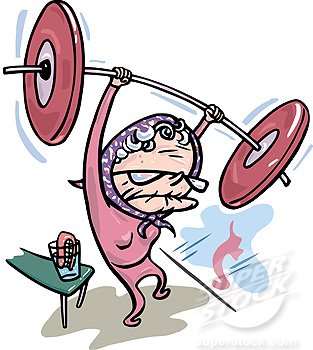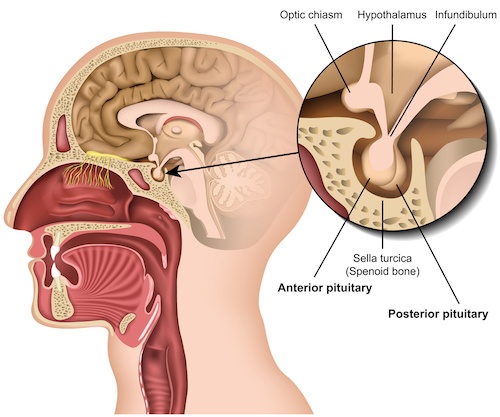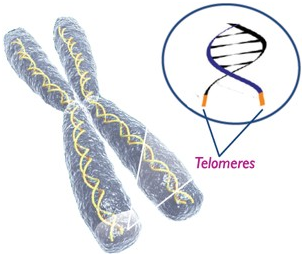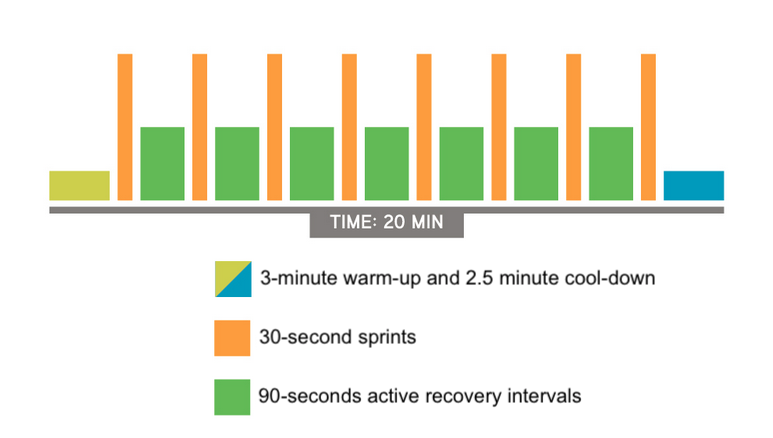Boost Your Human Growth Hormone in 20 Minutes!

Boost your human growth hormone by doing a 20-minute exercise protocol that can stimulate your own endogenous production of HGH, resulting in a more youthful and healthy you.

Boost your human growth hormone through breathless resistance training. But Granny, an assault bike is better than presses.
Updated on July 22, 2023
People are interested in Human Growth Hormone (“HGH”) because they’ve heard that it’s important for preserving youthful vigor, looks and strength. HGH is on my radar because one of my main focuses in life is to live a long and strong life. Attaining this without coaxing my body to maintain a decently high level of HGH would be a difficult challenge.
Not to mention that the way to induce your body to produce more HGH is through a type of exercise called high intensity interval training. That type of training will also increase your Vo2 max, which has a greater correlation to all-cause mortality than any other metric. (See: How To Reduce Obesity In Older Adults and Improve VO2 Max.)
In this post, we’re going to discover how exercise favorably impacts HGH, IGF-1 and even telomere length.
What is Human Growth Hormone and Why Does It Matter?
Human growth hormone (HGH) is a hormone that is naturally produced by the pituitary gland and is essential for growth, cell regeneration, and maintaining healthy human tissue.
HGH is important for strength, health, and longevity. After the age of 30, our growth hormone starts declining, which can lead to decreased muscle mass, increased body fat, and reduced exercise capacity [1].
Just look at what happens to your body’s production of HGH over time:
Even you twenty-somethings are at the halfway mark of HGH production. At forty, you’re producing about half as much as at twenty, or about 3.5 times less than at your peak. The rate of decline slows after forty, but the slope is still down
HGH is linked to muscle growth and regulates body composition, muscle and bone growth, sugar and fat metabolism, and possibly longevity [2]. Elevated HGH levels can provide several health benefits, including:
- Increased muscle mass: HGH helps to build and repair muscle tissue after exercise, which can lead to increased muscle mass and strength [2].
- Reduced body fat: HGH can help to boost metabolism and burn fat, which can lead to a reduction in body fat [2][3].
- Improved bone density: HGH can help to improve bone density, which can reduce the risk of fractures and osteoporosis [1][2].
- Enhanced healing of fractures: HGH can help to speed up the healing process after an injury, including fractures [4].
- Increased exercise capacity: HGH can help to increase exercise capacity, which can lead to improved physical performance [3][5].
- Reduced risk of cardiovascular disease: HGH can help to reduce the risk of cardiovascular disease by improving bone density, reducing body fat, and increasing muscle mass [4].
- Improvement for erectile dysfunction: HGH can help to improve erectile dysfunction in men [4].
- Enhanced cognitive function and mood: HGH can help to enhance cognitive function and improve mood [4].
- Better sleep: HGH can help to promote better sleep, which is important for overall health and well-being [4].
It’s worth noting that synthetic HGH administered by injection is used to treat poor growth in children and adults, short bowel syndrome, and muscle loss in adults [5]. However, HGH injections can have side effects, including nerve, muscle, or joint pain, swelling of the arms and legs, and high cholesterol [5][6]. Furthermore, there is little evidence to suggest that HGH can help otherwise healthy adults regain youth and vitality, and HGH treatments may increase the risk of other medical conditions [7].
There is debate about the value of stimulating the HGH levels of someone at the norm per the above chart. WebMD has a succinct post, on the subject, which distills down to:
It isn’t clear if human growth hormone may offer other benefits to healthy adults.
The “other” in “other benefits” refers to an increase in muscle mass and a concurrent reduction in body fat; however, strangely, the increased muscle doesn’t seem to increase strength.
Could it be that strength wasn’t increased because WebMD’s review, like most evaluations of HGH, is based upon it being injected or introduced some other way into the human body?
That’s not what I’m writing about.
What I am saying is that you can boost your human growth hormone by stimulating more HGH naturally by your own body through doing a certain, precise type of exercise.
This is something I’ve been doing myself for about a month several years.
The Link Between HGH, Telomeres, the IGF-1 Axis and Exercise
There’s a lot of evidence indicating that exercise has a positive effect on HGH, telomeres and the IGF-1 (insulin-like growth factor 1) axis.
This is good news.
Telomeres are found at the ends of chromosomes. Their length may foretell life span. They shorten as cells divide. The shorter they are, the closer you are to meeting your maker.
IGF-1 is a hormone produced in response to stimulation by human growth hormone (HGH). It plays a crucial role in promoting cell growth, tissue repair, and overall development.
HGH, IGF-1 and telomeres are worth knowing about, so let’s dig in…
Telomeres and exercise
Telomeres are protective caps at the ends of chromosomes that shorten with age and cellular replication. Telomere length is considered a marker of cellular aging.
Regular exercise has been associated with longer telomeres, indicating a potential anti-aging effect [8]. Studies have shown that exercise has a beneficial effect on telomere length compared with usual care or inactivity, and aerobic exercise slows the decline in telomere length [9].
Although the exact mechanisms linking exercise and telomere length are not fully understood, exercise-induced reductions in oxidative stress and inflammation, along with the activation of telomerase (an enzyme involved in telomere maintenance), are thought to contribute to the preservation of telomere length [10].
Exercise exhibits a favorable impact on telomere length, especially on a chronic pattern and particularly in older individuals [11]. Regular physical exercise has been shown to have a positive effect on telomere lengthening, which decreases mortality in women with breast cancer [12].
The IGF-1 axis
The IGF-1 (insulin-like growth factor 1) axis is a complex hormonal system involving multiple components that regulate the production and activity of IGF-1.
IGF-1 is a hormone produced primarily in the liver in response to stimulation by human growth hormone (HGH). It plays a crucial role in promoting cell growth, tissue repair, and overall development.
The IGF-1 axis consists of the following components:
Human Growth Hormone (HGH): HGH, also known as somatotropin, is produced by the pituitary gland and stimulates the liver to release IGF-1. HGH acts as the primary regulator of IGF-1 production.
Insulin-Like Growth Factor 1 (IGF-1): IGF-1 is a hormone with structural similarities to insulin. It is produced in various tissues, including the liver, and exerts its effects on target tissues throughout the body. IGF-1 promotes cell growth, proliferation, and differentiation.
IGF Binding Proteins (IGFBPs): IGFBPs are proteins that bind to IGF-1, modulating its availability and activity. There are multiple IGFBPs, with IGFBP-3 being the most abundant and significant one. IGFBPs help regulate the distribution, transport, and stability of IGF-1 in the bloodstream.
The IGF-1 axis plays a vital role in growth, development, and maintenance of various tissues and organs throughout life, but like many of the hormones released by our endocrine system, its activity and regulation can be influenced by aging.
The IGF-1 axis and aging
Here’s how aging impacts the IGF-1 axis:
Declining HGH Secretion: With age, the secretion of HGH tends to decrease, leading to lower stimulation of IGF-1 production[13]. This decline in HGH production is believed to contribute to the age-related decline in IGF-1 levels.
Reduced IGF-1 Levels: Aging is associated with a gradual decline in circulating IGF-1 levels [14]. This decline may be partly attributed to the reduced stimulation by HGH. Lower IGF-1 levels have been linked to various age-related changes, such as reduced muscle mass, impaired bone health, and altered metabolism.
Altered IGFBP Levels: Aging can also affect the levels and activity of IGFBPs, which regulate the availability and bioactivity of IGF-1. While IGFBP-3 levels tend to decline with age, other IGFBPs may increase [15]. These changes in IGFBP profiles may influence the bioavailability and transport of IGF-1 in the body.
The age-related changes in the IGF-1 axis have implications for various aspects of health and aging-related conditions. Low IGF-1 levels have been associated with decreased muscle mass, impaired wound healing, increased risk of osteoporosis, and metabolic disorders [16][17].
It’s important to note that the relationship between the IGF-1 axis and aging is complex, and more research is needed to fully understand the mechanisms and consequences of these changes.
The IGF-1 axis and exercise
High-intensity interval training (HIIT) has been shown to increase IGF-1 (insulin-like growth factor 1) levels in the body. The mechanisms through which HIIT affects IGF-1 are not fully understood, but several factors may contribute to this response:
Exercise-induced stress: HIIT involves short bursts of intense exercise followed by periods of rest or low-intensity activity. This type of exercise elicits a significant physiological stress response in the body [18]. The stress response activates various signaling pathways, including those involved in IGF-1 regulation [19].
Growth hormone (GH) stimulation: HIIT has been shown to increase GH secretion [20]. GH stimulates the liver to produce IGF-1. The rise in GH levels during HIIT may contribute to the subsequent increase in IGF-1 levels [21].
Muscle damage and repair: HIIT can cause muscle damage due to the high-intensity contractions involved. This muscle damage triggers a repair and regeneration process in the body [22]. IGF-1 plays a crucial role in muscle tissue repair and growth. Elevated IGF-1 levels following HIIT may facilitate the repair and remodeling of damaged muscle tissue [23].
Metabolic adaptations: HIIT has profound effects on metabolic adaptations, including improved insulin sensitivity and glucose metabolism [24]. IGF-1 is known to interact with insulin signaling pathways and influence glucose uptake and metabolism [25]. The improvements in metabolic function induced by HIIT may be associated with increased IGF-1 levels.
It’s important to note that the exact mechanisms underlying the relationship between HIIT and IGF-1 are still being studied, and further research is needed to fully understand the intricate interactions.
Boost Your Human Growth Hormone with Sprint 8

An air bike (aka assault bike) like this one from Rogue Fitness is ideal for HIIT because it requires the use of both your upper and lower body muscles, thereby compounding the metabolic load and effectiveness of short bursts of exercise.
So, now you have a good idea that exercise is an important and capable activator of telomerase, the enzyme that helps telomeres resist shortening as cells divide, and it can boost IGF-1 and HGH.
But what kind of exercise?
Both aerobic exercise and resistance training can boost your human growth hormone levels, but the magnitude of the increase may vary depending on factors such as exercise intensity and duration.
High-intensity interval training (HIIT) is particularly effective in stimulating HGH release. HIIT involves short bursts of intense exercise followed by periods of rest or low-intensity activity. This type of exercise has been shown to elicit a substantial HGH response in both trained and untrained individuals [26][27].
The precise biological mechanisms through which exercise influences HGH secretion are not fully understood. However, some proposed explanations include:
- Neural stimulation: Exercise, especially high-intensity workouts, stimulates the sympathetic nervous system, leading to an increase in HGH secretion [28]. This neural activation may trigger the release of HGH from the pituitary gland.
- Lactic acid accumulation: Intense exercise can result in the accumulation of lactic acid in the muscles. It is believed that this accumulation stimulates HGH release as a compensatory mechanism [29].
- Blood flow and oxygen delivery: Exercise improves blood flow and oxygen delivery to the muscles. This increased blood perfusion may enhance the delivery of nutrients and growth factors, including HGH, to the target tissues [30].
Various studies indicate that high-intensity exercise can increase HGH levels.
Here are two key findings:
- A minimum duration of 10 minutes of high-intensity exercise can increase HGH levels in men [31], which was the cohort studied, but undoubtedly the same or similar results would occur in women.
- High-intensity exercise can increase HGH levels, but the physiological mechanisms involved in the increase of HGH after acute aerobic versus acute resistance exercise may also be important [32].
Physical exercise is associated with increased serum concentrations of IGF-1, which is decreased in elderly patients and has been shown to play a critical role in formation, maintenance, and regeneration of skeletal muscles [33].
OK, with all that as some background, let’s get into a specific HIIT protocol that will boost your human growth hormone, the Sprint 8.
Sprint 8
Phil Campbell is an exercise trainer who through much testing, trail and error developed the Sprint 8 protocol, a specific form of high-intensity interval training (HIIT) designed to optimize cardiovascular fitness and promote various health benefits. The protocol consists of short bursts of all-out exercise followed by active recovery periods.
Campbell lays out the details about his Sprint 8 program in the video above, which I will also summarize.
Here’s an overview of the Sprint 8 protocol and how it may boost human growth hormone (HGH) levels:
Structure of the Sprint 8 Protocol
The Sprint 8 protocol involves performing a series of eight intervals, each lasting 30 seconds, with a 90-second active recovery period between intervals. The intervals are typically performed on cardio machines such as treadmills, stationary bikes, or elliptical trainers. The exercises are performed at maximum effort during the high-intensity intervals.
Impact on HGH Release
The Sprint 8 protocol has been suggested to stimulate HGH release in the body. The intense nature of the intervals and the short recovery periods may elicit a robust physiological stress response, leading to an increase in HGH secretion. Here are a few potential mechanisms through which the Sprint 8 protocol might boost HGH levels:
Neural Stimulation
The high-intensity efforts during the Sprint 8 intervals activate the sympathetic nervous system. As I mentioned above, neural stimulation is known to play a role in HGH release, and the intensity and duration of the intervals in Sprint 8 may promote significant neural activation and subsequent HGH secretion.
Metabolic Stress and Lactic Acid Accumulation
The all-out efforts during the Sprint 8 intervals can induce metabolic stress and contribute to the accumulation of lactic acid in the muscles. This metabolic stress is believed to be associated with HGH release as part of the body’s compensatory response.
Growth Hormone Response to Exercise
HIIT, including the Sprint 8 protocol, has been shown to elicit a substantial growth hormone response in both trained and untrained individuals. While the precise mechanisms are not fully understood, the intensity and nature of the exercise stimulus appear to be key factors.
It’s important to note that the exact impact of the Sprint 8 protocol on HGH levels may vary among individuals and could be influenced by factors such as age, fitness level, and overall health. It’s important to ease into Sprint 8 slowly — even if you are a regular exerciser — and that you get adequate recovery between sessions; for most people doing this twice per week is plenty.
How to do Sprint 8
There’s three steps to doing the Sprint 8.
1. Choose your exercise
Choose an anaerobic exercise such as sprinting, running up stairs, running up a hill, a stationary bike, an elliptical exerciser, rowing machine, or (my favorite) an air (assault) bike, like the one shown above.
Phil Campbell says that there are many different ways you could do Sprint 8. The point is to get near exhausted in 30 seconds or less. That’s the key. The workload needs to be sufficiently intense that after 30 seconds, you’re just praying for those last seconds to go by so you can get to the active rest phase.
2. Do 8 sets, 30 seconds each
After a warm-up, do the exercise as fast/hard as you can for 30 seconds. Then slow way down (for instance, if you’re sprinting, walk) for 90 seconds and then leap to it again for 30 seconds, and so on eight times.
Sprint 8 Protocol
3. Ingest protein
Within 30 minutes after Sprint 8 session, ingest 20 to 30 grams of protein, either a protein drink (whey is good) or food.
Spring 8 words of wisdom
Ease Into It. You will not be able to do 8 sets right away. If you do, you’re probably not busting enough during the 30 seconds. Particularly if you’re past 40 years of age or have been rather sedentary, begin slowly. After warming up, try doing the 30 seconds at half power at first. I’m doing four at full bust and four more slowly. Doing eight, even if just two sets are hard, is a good idea so that you’ll get accustomed to the protocol.
Rest and recover. Most of us will need at least two days of recovery. For most of us, you will injure or exhaust yourself if you try to do BYA8 more often than every third day.
Eat protein. You’ll need to eat more protein than usual to feed your muscles during the anabolic and growth phases post exercise; otherwise you won’t build enough muscle or recover sufficiently to keep the program going. (Anabolic recovery begins about 45 minutes after exercise, and the growth phase kicks in thereafter till the next catabolic, muscle break-down, creating workout.)
Boost Your Human Growth Hormone with Sleep and Diet
Sleep and diet play crucial roles in the body’s natural production of human growth hormone (HGH). Both factors can influence HGH secretion, and optimizing sleep quality and maintaining a healthy diet can support its production.
Let’s dig into some details…
Boost your human growth hormone with sleep
Restorative sleep is essential for the body to function properly, and it plays a crucial role in the release of human growth hormone (HGH). Here are some ways that restorative sleep can boost HGH levels:
Stimulates HGH release: HGH release is stimulated by sleep, especially deep sleep or slow-wave sleep (SWS) [34][35]. Growth hormone secretion typically takes place during the first few hours after sleep onset and generally occurs during SWS [35].
Reduces cortisol levels: Cortisol is a hormone that is released in response to stress and can interfere with HGH release. Restorative sleep can help reduce cortisol levels, which in turn can help increase HGH levels [36].
Promotes cellular repair: During restorative sleep, the body repairs and regenerates tissues, including muscle tissue. HGH plays a key role in this process, as it helps stimulate the growth and repair of cells [37].
Improves metabolism: HGH helps regulate metabolism, and restorative sleep can help maintain normal HGH levels, which in turn can help improve metabolism [37].
You can also take a melatonin supplement prior to bedtime. Famed melatonin researcher Dr. Walter Pierpaoli formulated the very effective Melatonin MZS brand.
You may also consider L-tryptophan. It’s an essential amino acid that is a precursor to serotonin and melatonin, and it’s also involved in the regulation of HGH secretion. Tryptophan-rich foods, such as eggs, milk, beans, and meat, can naturally boost HGH levels, and you can supplement with it as well.
In summary, restorative sleep can boost HGH levels by stimulating HGH release, reducing cortisol levels, promoting cellular repair, and improving metabolism. To promote restorative sleep, it is recommended to establish a regular sleep schedule, avoid caffeine and alcohol before bedtime, create a relaxing sleep environment, and limit exposure to electronic devices before bedtime [34].
Boost your human growth hormone with diet
Nutrition plays a significant role in supporting HGH production. A balanced diet that includes specific nutrients can positively impact HGH levels.
Here’s how diet influences HGH:
Eat foods rich in melatonin: As previously mentioned, foods such as eggs, fish, mustard seeds, tomatoes, nuts, grapes, and raspberries are highly recommended by experts [38][39][40]. Melatonin-rich foods can increase the release of HGH by up to 157%, with raspberries giving the best boost to your levels [40].
Reduce sugar intake: High blood sugar inhibits HGH release, so reducing sugar intake can help maintain normal HGH levels [38][41]. Read How to Measure and Fix Your Blood Sugar.
Eat foods high in protein: Amino acids found in protein help synthesize L-orthinine, a compound that raises HGH levels [40]. Foods high in protein include meat, eggs, fish, spinach, and unsweetened yogurt [41][40]. Read my posts about protein.
Lose weight: Carrying excess weight can interfere with normal bodily functions, including that of the pituitary gland, which produces HGH. Losing weight can help increase HGH levels [42]. Read my posts about losing body fat.
Consider caloric restriction and fasting: Some studies suggest that caloric restriction and fasting can increase HGH levels [38][42]. However, more research is needed to confirm their effectiveness. Read my posts about time-restricted eating.
In summary, to boost HGH levels naturally through diet, it is recommended to eat foods rich in melatonin, reduce sugar intake, eat foods high in protein, take melatonin supplements, perform high-intensity exercises, get enough sleep, lose weight, and consider caloric restriction and fasting.
Let me know what you think in the Comments below about all this, and especially how you can boost your human growth hormone with the Sprint 8 method . Is this something you are willing to do? If not, why do you hesitate?
Subscribe to my Newsletter!
Last Updated on February 7, 2024 by Joe Garma








